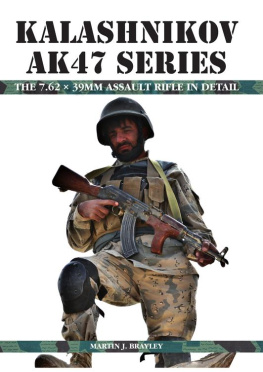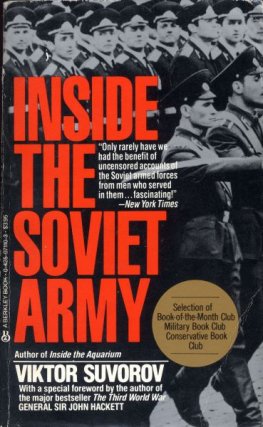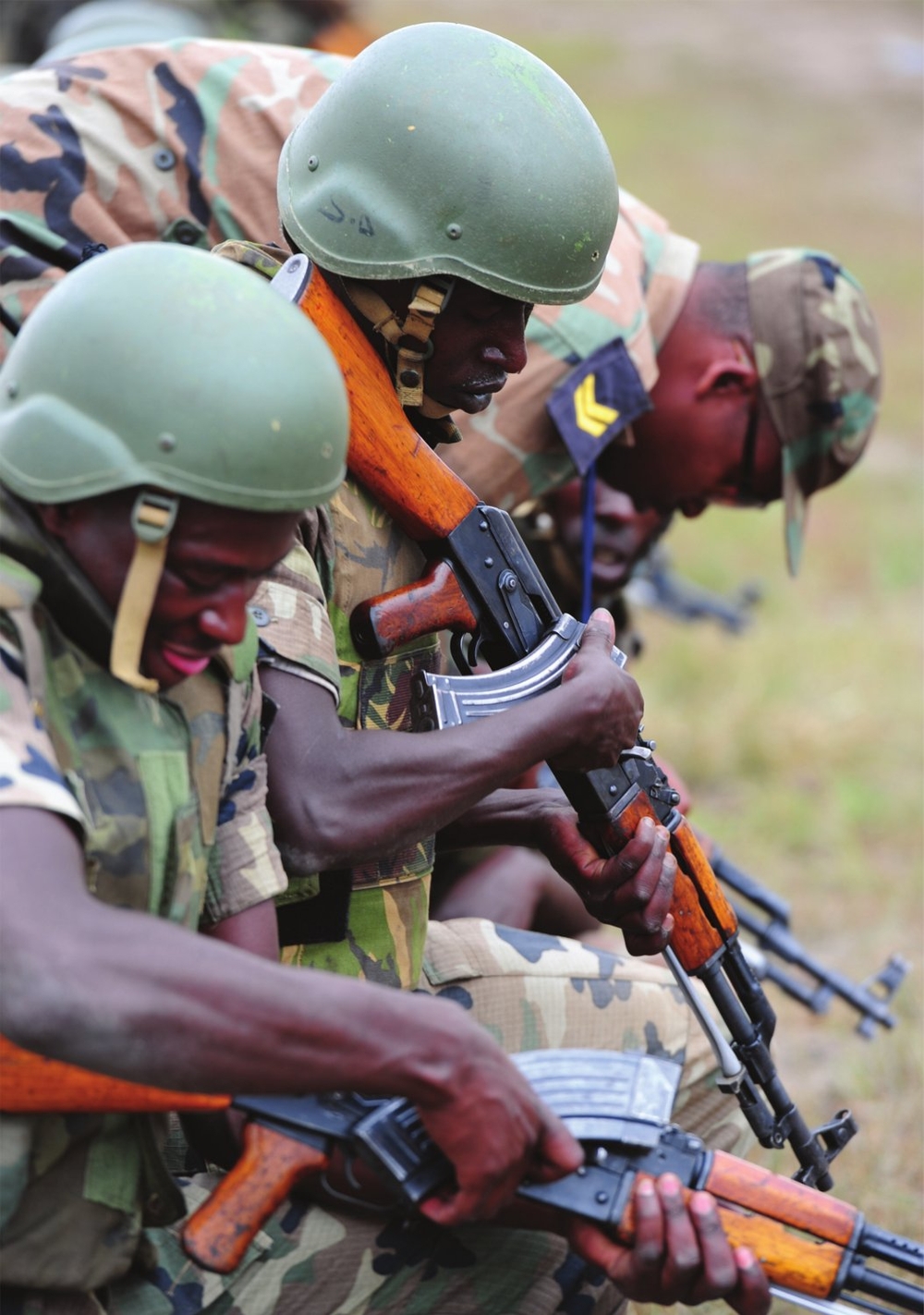First published in 2013 by
The Crowood Press Ltd,
Ramsbury, Marlborough,
Wiltshire, SN8 2HR
www.crowood.com
This e-book edition first published in 2013
Martin J. Brayley 2013
All rights reserved. This e-book is copyright material and must not be copied, reproduced, transferred, distributed, leased, licensed or publicly performed or used in any way except as specifically permitted in writing by the publishers, as allowed under the terms and conditions under which it was purchased or as strictly permitted by applicable copyright law. Any unauthorised distribution or use of this text may be a direct infringement of the authors and publishers rights, and those responsible may be liable in law accordingly.
ISBN 978 1 84797 526 3
Acknowledgements
The author would like to acknowledge the following for providing assistance with the production of this book: Toby Brayley, UK; Paul Paxton, UK; John James, UK; WO Ed Storey, Canadian Military Engineers; Terry Moon, USA; Janette Palubicki, UK; Media Image Photography, UK; PDH Enterprises, UK; Antiques Storehouse, UK; AJS Militaria, UK; Hampshire Constabulary, UK; United States Department of Defense; Hungarian Defence Ministry; ISAF Media; Republic of Serbia Ministry of Defence.
Authors note
As the title suggests this book explores the variety of weapon types loosely termed Kalashnikov or AK47 by the masses and the media. This is undoubtedly the most readily recognized weapon type ever produced. However, the generic terms Kalashnikov and AK47 cover a vast number of weapon variants and national production far beyond the original design by Mikhail Timofeyevich Kalashnikov. This book sets out to detail the principal design features of the Avtomat Kalashnikov series of weapons using the original 7.6239mm M1943 cartridge and the licensed and illegal variants produced worldwide. The official Soviet designation of 7.62mm Avtomat Kalashnikov obrazets 1947g was usually abbreviated to 7.62mm AK, with the same designation being applied to the first three variants of the weapon (types 1, 2 and 3 receivers). In the West the incorrect, but generally accepted, designation of the weapon type is AK47. In an effort to provide the correct national designations, however, the term AK has been used throughout this work to apply to the first three variants of the AK rifle. The Soviet designation for the fourth pattern stamped steel receiver was Avtomat Kalashnikov Modernizirovanniy, abbreviated to AKM, and again the official designation is used in this work.
At the time of the AK47s development the country now known as Russia formed part of the Union of Soviet Socialist Republics or Soviet Union. Similarly, references to Yugoslavia cover events before 2003, while references to Serbia cover those after that date or weapons that may be identified with Serbian forces.
The Great Patriotic War
At the turn of the twentieth century the standard Russian infantry weapon was the 7.6254mm M1891 Mosin Nagant rifle. This rifle was typical for the period. Wooden stocked, it fired a smokeless cartridge from a five-round integral magazine and had sights graduated in Arshin (a measurement equivalent to 71.12cm/28in). The M1891 bayonet issued with the rifle was a somewhat obsolete design. At a time when the majority of the worlds armies were using knife or sword type bayonets, the Russians introduced a cruciform section socket bayonet that was to be carried fitted to the rifle at all times and was therefore not provided with a scabbard.
The rifle was modified in 1930 to the M1891/30. The minor improvements included a hooded foresight post, reducing the barrel length by 9cm (3.5in) and marking the sight graduation in metres.
In 1938 a short version of the M1891/30 rifle was introduced into service as the M1938 carbine. Essentially little more than an M1891/30 rifle with a reduced barrel length, giving an overall length some 20cm (8in) shorter than the rifle, the carbine was designed for rear echelon troops. It had no provision for the attachment of a bayonet, an unnecessary expense for troops who were unlikely to engage an enemy at bayonet point. However, the experiences of the Great Patriotic War suggested differently and it was soon realized that even rear echelon troops would benefit from having a bayonet. The M1938 carbine was thus modified in 1943 by the provision of a folding spike bayonet permanently fitted at the muzzle. The modified carbine with bayonet entered service as the M1944 carbine, which was to see extensive post-war service with many Soviet satellites and politically allied nations.
While the majority of Russian troops were armed with bolt action rifles, the interwar years saw extensive research into self-loading and fully automatic rifles. A modified self-loading version of the 1891 rifle had been made in 1910 by Fedor Tokarev but it was not taken into service. During the early 1930s Sergei Simonov undertook work that resulted in the adoption in 1936 of the gas-operated Avtomaticheskaya Vintovka Simonova AVS36 rifle. The design was to prove unsatisfactory, however, and production was terminated in 1938 when a Tokarev design was accepted into service. The Samozaryadnaya Vintovka Tokareva SVT38 was an improvement over the AVS36, but it too was not without its problems and was not well received by the troops using it. Therefore in 1940 a modified and improved version was introduced into service as the SVT40. The 7.6254mm rimmed cartridge had been used in the AVS and SVT rifles, but at best it was unsuited to gas-operated weapons magazine feed and it was undoubtedly overpowered. It had been anticipated that a self-loading weapon would eventually replace all bolt action rifles in Soviet service, with early war Soviet tables of organization and equipment showing a scale of 33 per cent of infantry rifles supposedly being self-loading. This figure was not achieved as the gas-operated rifle was expensive and time-consuming to manufacture. Thus production of the SVT40 declined in favour of simpler bolt action rifles and sub machine guns (SMG) as the Great Patriotic War progressed.
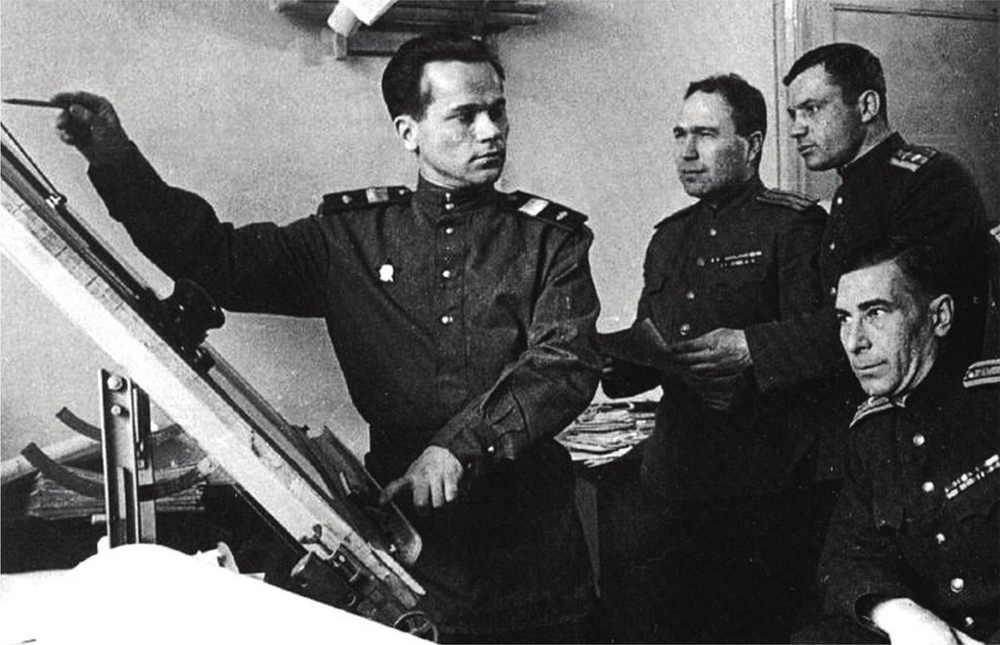
Tank Corps Strshiy Serzhnt (Senior Sergeant) Mikhail Timofeyevich Kalashnikov photographed at his drawing board during the Great Patriotic War. Kalashnikov began studying weapon design during a period of convalescence after being wounded during the battle of Bryansk in October 1941 when he was serving as the commander of a T34 tank of the 24th Tank Regiment. Private collection
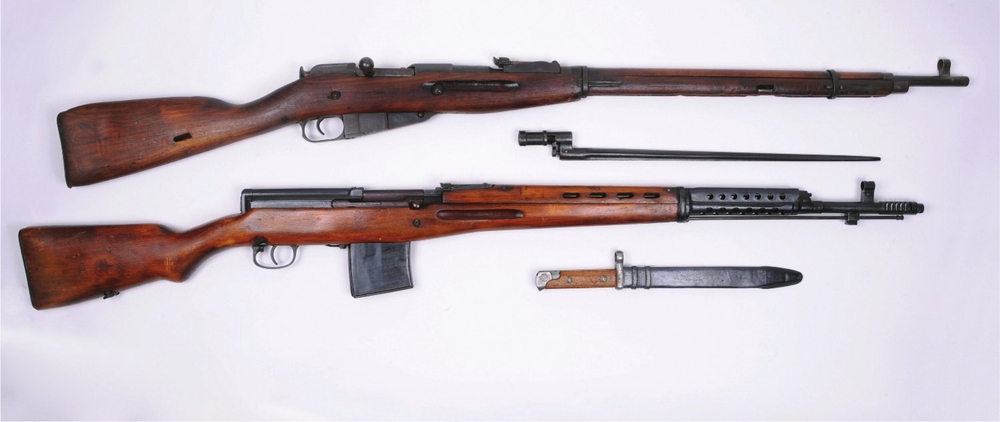
Russia adopted the bolt-action Mosin Nagant rifle in 1891. Shown above is the slightly modified version of the M1891, the M1891/30 rifle, the mainstay of Soviet infantry weapons during World War II. Below is the Tokarev SVT40, a gas-operated self-loading rifle that had originally been intended to replace the M1891 rifle in Russian service. The outbreak of war and design problems with the SVT rifles resulted in the bolt-action M1891s remaining standard, but with a third of infantry troops supposedly armed with the SVT40. The M1891 rifle was fitted with a quadrangular-bladed socket bayonet but there was no provision for a scabbard as it was intended to be carried on the weapon at all times. The SVT M1940 was provided with a knife bayonet carried on the belt in a steel scabbard. Media Image Photography

